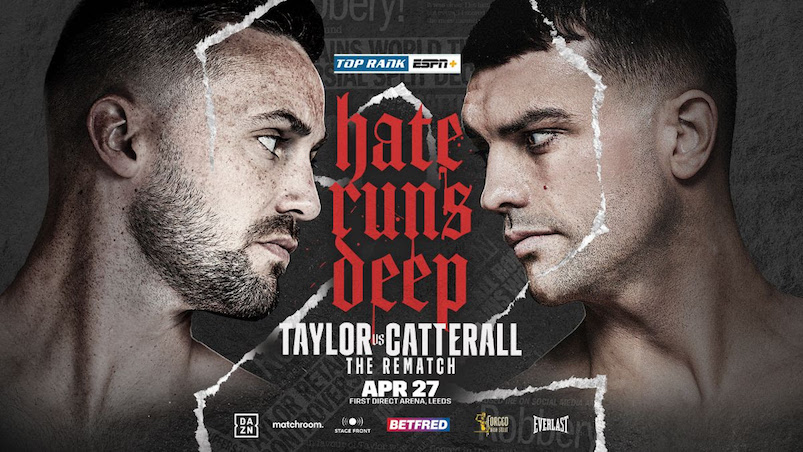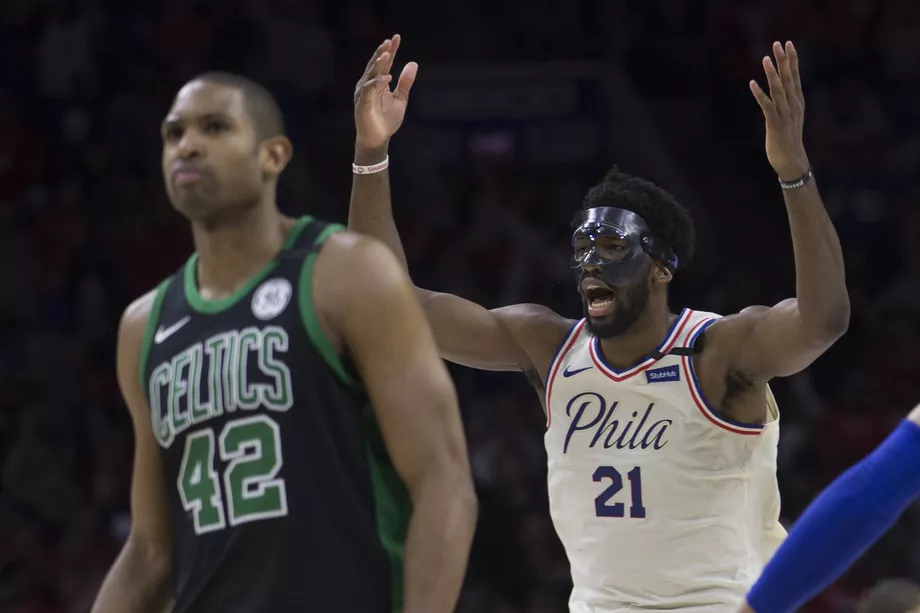The timing is right. And LeBron is gone.
LeBron James is in the Western Conference. We should start there because everything about the Eastern Conference hinges on that fact. LeBron ran the East for the last decade, reaching the Finals in each of the last eight seasons with either the Heat or the Cavs. Challengers came and challengers went, but every June there was LeBron repping the East, usually against the mighty Spurs and Warriors.
More than anyone, or even any franchise, LeBron carried the conference’s reputation on his broad shoulders. As the clear lesser of the two geographic zones, James gave the East legitimacy. His absence leaves a huge power vacuum.
LeBron’s exit neatly coincides with the resurgence of two of the conference’s most storied franchises. Both Philadelphia and Boston have been building toward this season for the last five years and both have declared themselves ready to step into the void.
This is the renewal of a rivalry that built the NBA in the 60s, sustained it through the 70s, and grew particularly vicious in the early 80s. (If you would like to watch professional basketball as bloodsport, go find a video of the fourth quarter of Game 7 of the 1981 Eastern Conference finals.) That the Celtics and 76ers play for cities that generally despise one another only adds to the appeal.
In the here and now, the Sixers’ Process and the Celtics’ Plan are two of the most fascinating team building exercises in recent memory. While taking wildly divergent rebuilding paths, both the Sixers and Celtics are loaded with star power and both are led by creative coaches who personify this generation of sideline maestros.
They even have recent playoff history, with the C’s taking their semifinal series in five games last May. That series was merely a prelude to what should be a half-decade of annual postseason battles.
The NBA has certainly taken note. The Celtics and Sixers will play each other on Opening Night and again on Christmas Day in the coveted 5:30 p.m. ET slot. All four of their games will be broadcast nationally. Indeed, almost half of all their games will be on national television this season. In a LeBron-less time zone, this is the rivalry that will once again define the Eastern Conference.
It’s at this moment that the Toronto Raptorswould like a word. The Raps have a new coach in Nick Nurse and a new star in Kawhi Leonard to work with strong nucleus of returning talent. An optimistic view would have them as favorites and no worse than a top three seed. These are not the same old Raptor teams because Leonard simply puts them in an entirely different class. He is a legit top-5 player and one of two players who could win MVP and Defensive Player of the Year. (Anthony Davis is the other.)
In addition to Leonard, the Raps also picked up Danny Green from the Spurs in the DeMar DeRozan trade. With Green and Leonard on the wing, Kyle Lowry on the ball, Serge Ibaka protecting the rim, and Pascal Siakam flying around the court, the Raps will have one of the best defenses in the league.
Assuming good health and chemistry, these Raps should win 55-60 games and contend for the top seed in the East. Those are big assumptions, and taking on Leonard in the final year of his contract was the biggest gamble of the offseason. Time will tell if they have staying power beyond this season to make this a three-headed race.
Back to the matter at hand ...
Ranking players is highly subjective and often foolhardy in retrospect, but if you were to have a draft featuring Philly and Boston’s rosters, you’d likely wind up taking Joel Embiid and Ben Simmonswith the top two picks. When the two teams met last postseason, it was assumed that Philly’s young stars were poised to run roughshod over the injury ravaged C’s.
What the Celtics had that Philly didn’t was Al Horford, a sublimely talented player whose abilities are more appreciated by coaches and advanced scouts than the general public. As one said shaking his head in admiration, that dude is never out of position.
Throughout that series, Horford helped contain Simmons while also checking Embiid in crunch time in the post. Very few big men have that kind of defensive versatility, and the entire series shifted on that dynamic.
While Horford’s consistent play was the main reason why the Celtics were able to advance in five games, the contributions of Jaylen Brown, Jayson Tatum, and Terry Rozier did not go unnoticed. Maybe the young talent gap wasn’t really so sizable after all.
What did go largely unnoticed was that Dario Saric put together back-to-back strong performances in Games 4 and 5. Once the Sixers unlocked Saric, they became a far more dangerous team. The Celtics’ relief in getting out of Boston with the series in five games was clearly evident. If nothing else, Embiid, Saric, and Simmons present an intriguing size contrast to Boston’s preferred small-ball lineups.
The X-Factor in all of this Markelle Fultz. We have no idea how good he can be or how his shot will come together. That he was taken first overall after then-Sixers GM Bryan Colangelo traded up with Danny Ainge feels like a pivot point in each team’s roster evolution. Ainge, of course, drafted Tatumwith the third pick and pocketed the Sauce Castillo draft swap special in the, um, process.
Tatum has a chance to be an All-NBA player sooner rather than later, while Brown’s development curve is so broad that putting a ceiling or expectations on his potential is futile. Then there’s Rozierwho could start for most teams but will have to settle for contending for Sixth Man of the Year honors.
Teams loaded with young talent are notoriously fragile creations. One minute they have the world at their feet, and the next they’re arguing passive aggressively through intermediaries. Nothing can ever be taken for granted in this league, as evidenced by the trials and tribulations of every would-be dynasty that has come before.
Still, this has all the makings of a generational struggle.
Kyrie Irving and Gordon Hayward are the wild cards in the whole equation. If the Celtics could beat Philly in five without their two most accomplished offensive players, how large will be the gap be with them back on the court? Another way to frame that question is to wonder if all that offensive talent will actually fit together on one team, particularly on the wing where Hayward, Brown, and Tatum all thrive as shot creators.
That’s the key riddle the Celtics have to unravel this season. Early indications from the preseason were not encouraging, but taking your cues from exhibition play is a dangerous game. What should be clear is that this will not be a linear path. It will take time for everyone to find a comfortable working environment with one another.
The Sixers have their own mystery to solve with Fultz. If he can get his career back on track, that would give Philly another shot creator on the perimeter to balance out their reliance on Embiid and Simmons. Early indications from preseason have been encouraging, but you know how that goes.
What we do know is that the acquisitions of Irving, Hayward, and Horford were the result of either a blockbuster trade or free agency. That is the key distinction between the two rosters. While Ainge has been able to work both player acquisition avenues, the Sixers and their revolving cast of general managers have been unable to cash in their assets and cap space on star players. (That’s no slight to J.J. Redick, who is awesome if not an All-Star.)
If the Celtics were able to play free and easy last spring, the burden of expectations falls squarely on their shoulders now that everyone is back healthy.
Managing expectations is a job for the coach, and Brett Brown and Brad Stevens were both hired before the 2012-13 season. Each was tasked with leading their franchises through the wilderness of massive rebuilding efforts.
In their own ways, each was a perfect fit for the task at hand. Brown’s unrelenting optimism was a beacon of light during dark seasons at the bottom of the standings, while Stevens’ steady hand came to personify the Celtics’ annual improvement.
Brown is forever leading with his chin, like a ping pong player getting ready for a kill shot. Whether it was confidently declaring that the playoffs were in reach before last season, or boldly making the case for a star player to join the fold, Brown never backs down from establishing a high bar and inviting everyone to enjoy the ride.
Stevens, meanwhile, is forever concerned with the day to day machinations of getting better and rarely looks beyond the next day’s game or practice. His unique niche is in seeing each game as a series of adjustments that are the result of all that careful preparation.
The charismatic Brown and the understated Stevens would seem to be a study in contrasts, but both possess the qualities that teams are looking for with their head coaches. They both stress defense while allowing a level of offensive freedom for their young stars that would have seemed reckless in past generations. In their own ways, both are able to communicate positively with their players.
You shouldn’t have to choose between Brett and Brad, so let’s not even go that route except to say that every good rivalry is made better by superior coaching.
The wonderful thing about the Process is that we can debate its merits from here until eternity because we will never really know for sure exactly what would have happened had Sam Hinkie been allowed to see it through to completion. The horrible thing about the Process is that every wrinkle in the Sixers’ evolution leads to another debate about its merits.
The brilliant part of Ainge’s vision was there was always something better peaking out on the horizon. You could win 50 games and get swept out of the playoffs and justifiably feel like it was an accomplishment. You could even lose a Game 7 on your home floor in the conference finals and still feel good about the future.
That all ends.
The Sixers are far enough removed from Hinkie’s ouster that seeing their roster through his prism obscures the fact that two thirds of the roster has been turned over from the end of his tenure. They are in Elton Brand’s hands now after slipping through Colangelo’s Twitter fingers and passing through the committee that held the ship together during the transition. How they move forward will tell us as much about their path as all that came before it.
The Celtics are still very much Ainge’s creation, but they have advanced past the honeymoon phase. The next step of their evolution involves managing the tricky balancing act between everyone getting paid in free agency and taking one more big swing at a game-changing trade. For once, they have elected to fully embrace the present moment.
It’s a new day, so let’s move past the old arguments and settle in for what should be a thrilling renewal of a rivalry that will define the current age.



